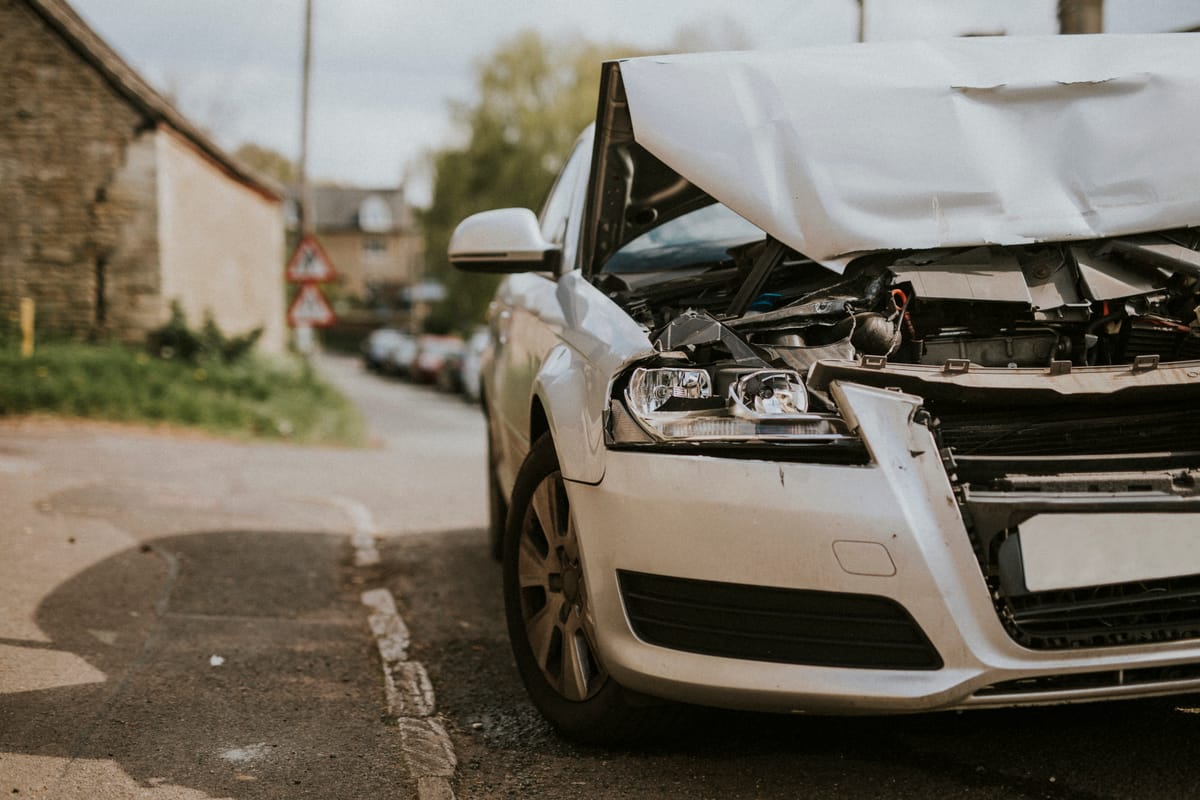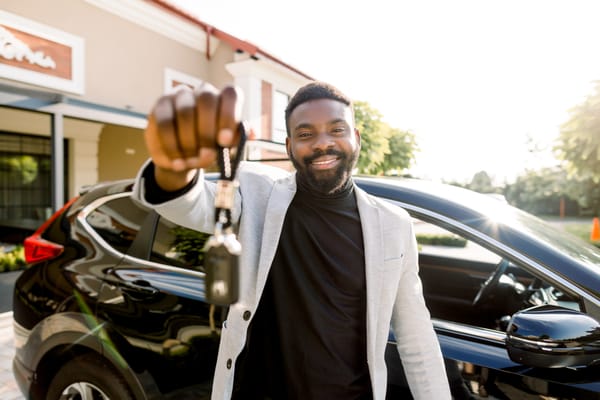7 Less Obvious Bad Driving Habits That Could Lead to Fatal Accidents

You know what's wild? Most drivers think they're doing everything right on the road.
They're not speeding past 120 on Thika Road. They're not texting while driving. They even wear their seatbelts religiously.
But then accidents still happen. And when they do, everyone's left wondering, "Shida ilitokea wapi sasa?"
Here's the thing: some of the most dangerous driving habits don't scream danger. They're quiet. Subtle. The kind that makes you go, "Aki, was that really the problem?"
Spoiler alert – yes, it was.
Let's talk about the sneaky driving habits that could turn your daily commute into a statistic.
Driving Way Slower Than Everyone Else
Can you believe it? You're doing 60 on the Expressway while everyone else is cruising at 90. You think you’re being careful, but kumbe you’re posing a risk to others on the road.
Driving significantly slower than the traffic flow disrupts the natural rhythm of the road. Here's what happens when you drive too slowly:
- Traffic backs up behind you – Creating frustration and forcing others to make risky overtaking manoeuvres. This forces other drivers to overtake on the wrong side, leading to collisions.
- Other drivers get distracted – They're too busy figuring out how to pass you instead of watching the road
- You disrupt traffic flow – Which statistically increases accident risk for everyone around you
What To Do Instead
- Match the flow of traffic (within legal limits, obviously)
- If you must go slow, stick to the leftmost lane
- Use your hazard lights if you're genuinely struggling
- Consider getting a car that matches your driving needs – maybe your car is the problem, not you
Remember: Being cautious and being slow are not the same thing.
2. Those Mirrors Aren't Just for Checking Your Makeup
How many times have you adjusted your side mirrors? Once? When you bought the car?
Ebu be honest now.
Most Kenyan drivers have their mirrors positioned to see the side of their own car. That's not what mirrors are for, bana. You already know where your car is – you're sitting in it!
Proper mirror adjustment can eliminate up to 90% of your blind spots. But most drivers don't know this because nobody taught them properly during driving school.
The Right Way to Set Your Mirrors
Side Mirrors:
- Lean your head against the driver's window
- Adjust the left mirror until you can just barely see the side of your car
- Sit normally and lean to the centre console
- Adjust the right mirror the same way
- You should NOT see the side of your car when sitting normally
Rear-View Mirror:
- Should frame your entire rear window
- Don't tilt it to see yourself (this isn't a selfie)
- Adjust it while sitting in your normal driving position
Still, always do the shoulder check before changing lanes. Mirrors help, but they're not foolproof.
3. The "10 and 2" Hand Position Is Outdated (And Dangerous)
Remember being told to hold the steering wheel at "10 and 2" like a clock? Yeah, forget that.
That advice is older than most matatus on our roads.
Modern cars have airbags, and if that airbag deploys while your hands are at 10 and 2, your arms could smash into your face. Medical professionals have seen some nasty injuries from this.
The new recommended position? 9 and 3, or even 8 and 4.
Why This Matters
- Better control – Lower hand position gives you more leverage for emergency maneuvers
- Airbag safety – Your arms won't become projectiles if the airbag deploys
- Less fatigue – Your shoulders stay more relaxed on long drives
Bonus: Stop Driving One-Handed
We see you. Hand on the gear stick, elbow out the window, looking all cool.
But when you need to swerve suddenly to avoid that pothole on Waiyaki Way? Good luck turning fast enough with one hand.
Both hands on the wheel. Always. Unless you're actually shifting gears, of course.
4. Ignoring Your Tires Until They're Completely Bald
When was the last time you actually looked at your tyres? Not just glanced – really looked?
Most drivers wait until they hear weird noises or feel vibrations. By then, the damage is done.
Poor vehicle maintenance, including worn tyres, contributes to countless accidents, especially during Kenya's rainy seasons when roads turn into slip-and-slides. The National Transport and Safety Authority (NTSA) data shows that vehicle defects are a major contributing factor to our road carnage.
What Worn Tires Actually Do
- Drastically reduce grip – Especially on wet roads (hello, hydroplaning)
- Increase stopping distance – Sometimes by as much as 50%
- Make you unpredictable – Your car won't respond the way you expect it to
NTSA reports that Kenya loses approximately Ksh310 billion annually to road accidents, with many preventable through proper vehicle maintenance and driver awareness.
Check Your Tires Monthly
- Tread depth – Use the coin test or get a tread depth gauge
- Tire pressure – Low pressure wears tyres faster and reduces fuel efficiency
- Visible damage – Cuts, bulges, or cracks mean it's time for replacement
- Rotation schedule – Every 10,000 km or as recommended
Regular maintenance saves lives. Period.
And if you're buying a used car, make sure you're getting one that's been properly inspected. Peach Cars' 600-point inspection checks everything, including tyre condition. Just saying.
5. Lane Hogging Like You Own the Road
There's always that one driver. Chilling in the overtaking lane at 70 km/h. Not overtaking anyone. Just vibing.
Meanwhile, everyone behind them is getting increasingly creative with their insults.
Hogging the overtaking lane doesn't just frustrate other drivers – it actively creates dangerous situations.
Why Lane Discipline Matters
When you occupy the overtaking lane unnecessarily:
- Other drivers make risky undertaking manoeuvres (passing on the left)
- Traffic congestion increases unnecessarily
- Road rage incidents become more likely
- You force faster drivers to weave through traffic
The Solution Is Simple
- Keep left unless overtaking – It's not just polite, it's the law
- Pass and move back – Don't camp in the overtaking lane
- Use your indicators – Let people know what you're planning to do
- Be predictable – Other drivers can only avoid you if they know what you're doing
On single-lane roads, pull over when safe to let faster traffic pass. Your ego can handle it.
6. Signaling as an Afterthought (Or Not at All)
Enyewe, some drivers treat indicators like they're rationing electricity. They'll flick them on half a second before turning, or not at all.
"The car behind me has eyes; they'll see me turning."
Yes, they have eyes. But they also have reaction times. And physics exists.
Proper signalling gives other drivers time to respond to your intentions. Without that time, accidents happen.
How Early Should You Signal?
- At least 3 seconds before turning in urban areas
- At least 5 seconds before changing lanes on highways
- Before you start slowing down – not after
- Even when you think no one's around – motorcycles and pedestrians appear from nowhere
Common Signalling Mistakes
- Last-second signals – Nobody can react that fast, boss
- No signal at all – You're not a psychic, neither are other drivers
- Leaving indicators on – Creates confusion about your actual intentions
- Signalling but not actually turning – Mixed signals cause accidents
Think of your indicators as a conversation with other road users. Don't leave them guessing.
7. Sitting Too Close (Or Too Far) From the Steering Wheel
Some drivers sit so close to the steering wheel they're practically hugging it. Others are so far back they look like they're reaching for the stars.
Neither position is safe.
Your sitting position affects everything: reaction time, control, visibility, and injury risk in a crash.
The Perfect Driving Position
Distance from wheel:
- Sit with your back against the seat
- Extend your arm – your wrist should rest on top of the steering wheel
- Your elbows should have a slight bend when holding at 9 and 3
Seat height:
- You should have a clear view over the dashboard
- Your head should have several inches of clearance from the roof
- Your line of sight should be above the steering wheel, not through it
Pedal reach:
- Your knee should have a slight bend when pressing the pedals fully
- You shouldn't have to stretch your leg or point your toes
Why This Matters
- Too close – The airbag can seriously injure you, plus you'll have limited steering control
- Too far – You can't react quickly enough, and in an accident, you'll slide under the seatbelt
- Wrong height – Affects visibility and increases fatigue on long drives
Adjust your seat properly BEFORE you start driving. Not while cruising down Ngong Road. Please and thank you.
The Bottom Line: Small Habits, Big Consequences
None of these habits feels dangerous in the moment. That's what makes them so sneaky.
You're not drunk. You're not speeding recklessly. You're not even on your phone. But you're still creating risk – for yourself and everyone else on the road.
NTSA data shows that road fatalities and injuries in Kenya have increased by 26% and 46.5% respectively, in recent years, with many deaths resulting from preventable driving behaviours that seem harmless until they're not.
Quick Checklist Before Every Drive
- Mirrors adjusted properly?
- Seat position correct?
- Tires in good condition?
- Both hands ready for the wheel?
- Plan to match traffic flow?
- Ready to signal early and often?
- Staying out of lanes you don't need?
Safe driving isn't about being perfect. It's about being aware.
And awareness starts with knowing what you didn't know was a problem in the first place.
Drive Safe, Drive Smart
At Peach Cars, we believe a safe journey starts long before you hit the road. It starts with getting a reliable, well-maintained vehicle that you can trust. And because the last thing you need is a car that adds to your road risks, we’ve got you with a wide selection of inspected, affordable, dependable, and safe cars!
Browse our collection of quality pre-owned vehicles or call us on 0709 726 900 to start your car ownership journey today or to upgrade your current one.
Meanwhile, drive safely out there. Seriously.




